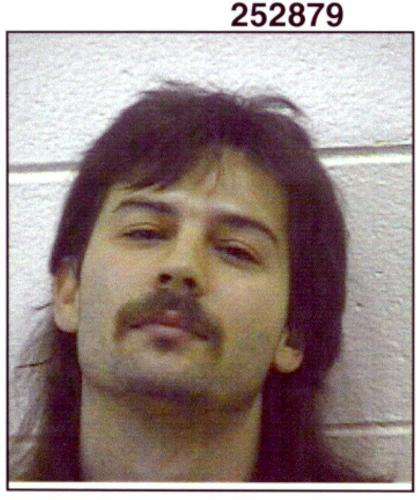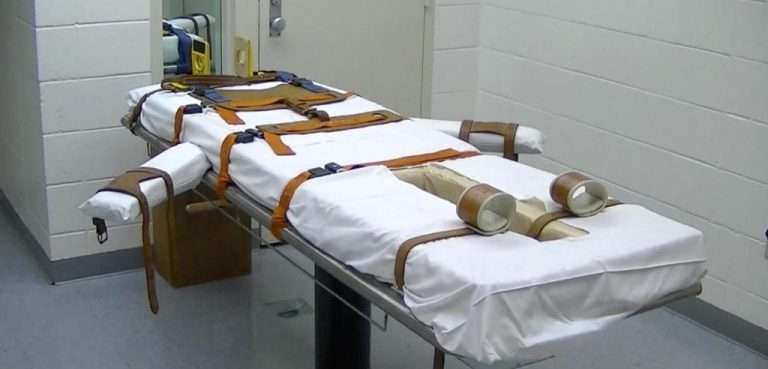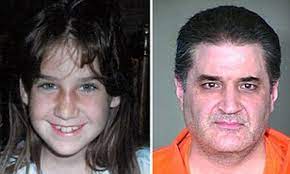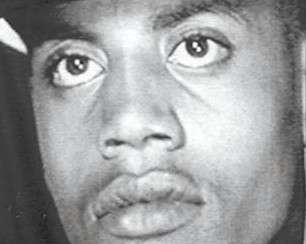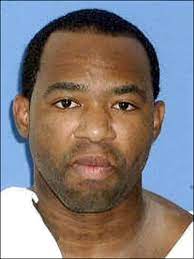Ted Bundy Executed For A Series Of Murders
Ted Bundy would be executed by the State of Florida for a series of murders
According to court documents Ted Bundy was responsible for at least thirty murders across the United States. For the murders that he would be executed for Bundy would commit 3 murders in a three week period with 2 of the murders committed over three days. All of the young women would be sexually assaulted before they were killed
Ted Bundy would be arrested, convicted and sentenced to death
Ted Bundy would be executed on January 24 1989 by way of the electric chair
Ted Bundy Photos
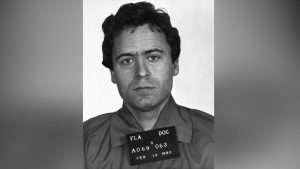
Ted Bundy FAQ
When was Ted Bundy executed
Ted Bundy was executed on January 24 1989
How was Ted Bundy executed
Ted Bundy was executed by way of the electric chair
Ted Bundy Case
This cause is before the Court on appeal from a circuit court judgment adjudicating Theodore Robert Bundy guilty of two counts of first-degree murder, three counts of attempted first-degree murder, and two counts of burglary. For the two crimes of first-degree murder the trial judge imposed sentences of death. Therefore this Court has jurisdiction of the appeal. Art. V, § 3(b)(1), Fla. Const.
During the early morning hours of Sunday, January 15, 1978, an intruder entered the Chi Omega sorority house, adjacent to the campus of Florida State University in Tallahassee, and brutally attacked four women residing there. Margaret Bowman and Lisa Levy were killed, and Kathy Kleiner and Karen Chandler sustained serious injuries. Within approximately an hour of the attacks in the Chi Omega house, an intruder entered another home nearby and attacked a woman residing there, Cheryl Thomas. All five women were university students. All were bludgeoned repeatedly with a blunt weapon.
The evidence presented at trial tending to prove that appellant Ted Bundy was the intruder at both crime scenes and the perpetrator of the two murders and three nearly fatal beatings comprised numerous elements, some of them being direct and others being circumstantial evidence. The principal items of evidence were: (1) the identification testimony of a resident of the Chi Omega sorority house who briefly saw Ted Bundy in the house; and (2) expert analysis of teeth marks left by the perpetrator on the body of one of the sorority house victims and comparison of the marks with the teeth of appellant. Auxiliary and corroborative items of evidence included: the closeness in time and similarity of the sorority house attacks and the subsequent attack; expert comparison of hairs found in the apartment of Cheryl Thomas with hairs from the head of Ted Bundy; the presence of Bundy in the immediate neighborhood of the Chi Omega house a few hours before the murders; the presence of Bundy on the front porch of his rooming house, also in the same vicinity, about an hour after the second intrusion and attack; two instances of flight in response to the approach of police officers in the weeks following the crimes; and certain incriminating statements of appellant. These various individual items of evidence, along with others, will be set out in the context of the following factual narrative. Taken together, the evidence constitutes legally sufficient proof of Bundy’s guilt on all the charges. FACTS
The evidence that was placed before the jury at the trial established the following facts. On January 7, 1978, appellant rented a room at The Oak, a rooming house near the Florida State University campus. One week later, during the evening hours of Saturday, January 14, Ted Bundy was seen in a barroom adjacent to the campus and next door to the Chi Omega sorority house. Three women testified that they were in the bar that night, and two of them identified appellant as having been there.
At approximately 3:00 a.m. on Sunday, January 15, 1978, Chi Omega house resident Nita Neary arrived home from a date and entered the house by the back door. She proceeded toward the front entrance hall of the house, where the main stairway was located. While moving through the house toward this front entrance hall, she heard the sounds of someone running down the stairs. When she arrived at the front entrance hall, Ms. Neary saw a man standing at the front door. The man held a club in his right hand, had his left hand on the doorknob, and was in the process of leaving *335 the house. Ms. Neary saw a right-side profile of the man’s face. She was able to look at him for several seconds before he left.
Nita Neary then went upstairs to her room, awakened her roommate, and told her what she had seen. Ms. Neary described the intruder and at trial her roommate testified concerning this initial description. Ms. Neary told her roommate that the man wore light-colored pants, a dark jacket, and a skiing cap, had a protruding nose, and carried a large stick with cloth tied around it. After some discussion among Ms. Neary, her roommate, and another house resident about whether to report the incident to the police, beating victim Karen Chandler came out of her room. The other women could see that she had been injured so they summoned medical help and the police. The severity of the intruder’s actions was soon discovered: Lisa Levy and Margaret Bowman had been killed; Karen Chandler and Kathy Kleiner had been severely beaten. The surviving victims were attacked in their sleep and could not describe their attacker.
Lisa Levy and Margaret Bowman were killed by strangulation after receiving severe beatings with a length of a tree branch used as a club. Margaret Bowman’s skull was crushed and literally laid open. The attacker also bit Lisa Levy with sufficient intensity to leave indentations which could clearly be identified as human bite marks. In the course of their investigation police technicians made numerous photographs of the bite on the victim’s body.
One of the officers dispatched to the scene took a description of the intruder from Nita Neary. The officer testified at trial that Ms. Neary described the intruder as a young white male, cleanshaven, with a dark complexion, about five feet, eight inches tall, weighing about 160 pounds, wearing a dark toboggan cap, a dark waist-length jacket, light-colored pants, and carrying a large stick.
While the police were taking statements and searching for evidence at the Chi Omega house, another attack was taking place only a few blocks away. At about 4:00 a.m. on Sunday, January 15, 1978, two residents of a duplex apartment on Dunwoody Street near the Florida State University campus heard loud noises coming from the adjacent apartment of the duplex house. They telephoned their next-door neighbor, Cheryl Thomas, and received no answer, so they called the police. The police arrived, entered the apartment, and discovered the severely beaten Ms. Thomas lying in her bed. She had been attacked in her sleep and could not describe or identify her attacker. A knotted pair of pantyhose, which did not belong to Cheryl Thomas, was found in the room. There were holes in the fabric the placement of which indicated that the pair of pantyhose might have been used as a mask.
At approximately 5:00 a.m. on Sunday, January 15, two men who knew appellant arrived at The Oak rooming house and proceeded inside to the room where one of the men lived. They saw Ted Bundy standing in front of the house and looking off in the distance in the direction of the Florida State University campus and the scenes of the crimes. As they passed him both men casually greeted appellant but he did not respond. Several hours later, at about noon on Sunday, several residents of The Oak, Bundy among them, were discussing the news of the crimes. One witness testified that during this conversation he speculated that the perpetrator was “some lunatic” who was “now probably hiding out real scared.” Ted Bundy disagreed, saying that the crimes were “a professional job” and that the killer was someone who had committed such crimes before and had probably already departed the area.
On Sunday, January 15, Nita Neary met with investigators and again described the man she saw in the foyer of the sorority house. The police arranged for an artist to make sketches based on Ms. Neary’s description and the sketches made at this time were admitted into evidence. One week later, Ms. Neary was placed under hypnosis and questioned concerning what *336 she had seen. During the hypnosis session, Ms. Neary said she had seen brown hair hanging out of the back of the man’s ski cap. This and a reference to the man’s eyebrows were the only factual elements obtained through hypnosis that had not already been learned from Ms. Neary’s previous descriptions. At trial she testified that after the hypnosis session she did not remember seeing the brown hair or eyebrows on the night of the crimes.
In April, 1978, an investigator from the Leon County Sheriff’s Department went to Muncie, Indiana to conduct a photographic identification array procedure with Nita Neary. At this time, appellant was in custody. The detective had cautioned Ms. Neary to avoid looking at news media photographs as well as news reports to the effect that Bundy was a principal suspect. Ms. Neary selected Bundy’s photograph from the array. In her testimony at trial, Nita Neary described the man she had seen as being a white man in his twenties, about five feet, eight inches tall, weighing about 165 pounds, and having a prominent nose with a straight bridge that came almost to a point. He was cleanshaven, had thin lips, and was slightly dark in complexion. She said she saw his face from the right side and that he wore a dark blue ski cap pulled down to his eyebrows and over his ear, a dark waist-length jacket, and light-colored pants. Finally, at trial Nita Neary pointed to Ted Bundy as the man she saw in the sorority house.
At about 1:45 a.m. on February 11, 1978, a Tallahassee police officer saw Ted Bundy standing beside a car on a street in the same campus neighborhood where both crime scenes and The Oak rooming house are located. The officer approached appellant and asked him what he was doing there. During their conversation the officer saw an unexpired automobile license plate inside the car and asked to see it. Ted Bundy complied and the officer walked to his police car to call the tag number in by radio. As he did so, Ted Bundy ran away and the officer was unable to pursue him.
Ted Bundy was arrested in Pensacola on February 15, 1978 under the following circumstances. At about 1:30 a.m. on February 15, a Pensacola police officer stopped the car being operated by Ted Bundy and attempted to arrest him. Although the reason for the arrest and the charge made were kept from the jury at trial, it is apparent from the record that Ted Bundy was charged with car theft when originally arrested. As the officer tried to handcuff Bundy, he struck the officer and fled. The officer fired at Bundy, then pursued, overtook, and subdued him. On the way to the jail Ted Bundy told the officer that he wished the officer had killed him and then asked, “If I run at the jail, will you shoot me then?”
A forensic hair and fiber analyst testified that she removed several human head hairs from the knotted pantyhose found in Cheryl Thomas’ room and subjected them to microscopic examination and comparison with sample hairs from the head of Bundy. The expert concluded that the human hairs found on the pantyhose had the same characteristics as Bundy’s and could have come from him.
There was testimony from a forensic dental expert who testified concerning his analysis of the bite mark left on the body of Lisa Levy, his comparison of the mark with appellant’s teeth, and his conclusions. Among the photographs of the bite mark were enlargements to actual size. Pursuant to a judge’s warrant, law enforcement authorities arranged for the dental expert to take wax impressions and photographs of appellant’s teeth. From the wax impressions, actual models of the two rows of teeth were cast. The expert testified that he was able to look at the particular features of the teeth and compare them to the indentations in the victim’s flesh as revealed in the photographs. The expert described his technique and his analysis in detail. His materials were exhibited to the jury. He expressed to the jury his opinion that the indentations on the victim’s body were left by the teeth of Bundy. Another forensic dentist came to the same conclusion using computer-enhanced photographs of the bite marks. Like the first expert, *337 the second expert explained the theory of his comparison. Both experts explained that because of the wide variation in the characteristics of human teeth, individuals are highly unique so that the technique of bite mark comparison can provide identification of a high degree of reliability.
https://law.justia.com/cases/florida/supreme-court/1984/57772-0.html


